It started raining in the middle of the night. And it looks like a wet and cloudy day today.
Woke up and cooked eggs and Orkney back bacon that the proprietor asked if we’d like her to get for us for our first breakfast. She got us bread, milk, eggs and bacon.

It’s a very nice setup this place. The most well stocked self-catering place with oil, salt and pepper and washing detergent and sponges, cloths etc – to me the most basic for holidaying self catering outfits.
This, Atlantic Lodges, had all of it. The last two only had salt and pepper, and the one before, the salt had run out and had not been replaced. Still, the one before, in Shetland was 55 pounds a night and this one in Orkney is averaging just over 67 pounds a night. As a comparison, my apartment in Glasgow will cost us 90 pounds a night.
It is 9am now and clearly, we are starting late. I think the blustery wind, the rain and the cold is making us feel lazy.
We head into Kirkwall, the capital of Orkney Islands. Here, we shop at the Tesco, that opens till midnight every night except Sundays. This means, I suppose that Orkney has reached a certain size that warrants midnight shopping in this area.
Then we headed to Jolly’s of Orkney where we got smoked haddock, haddock and salmon. The pickings were slim. All the fish is from Shetland Islands. But we order crab and scallops for tomorrow and the catch is coming in on Thursday morning, so there should be more choice. I want to try my hand at making the Cullen Skink – so I got leaks and smoked haddock and we have milk. I hope I manage somehow.
After dropping the groceries back at our apartment, we head off to South Ronaldsay the southern most part of Orkney that is connected to the mainland by bridges.
These bridges were built in WWII to protect the Scapa Flow.
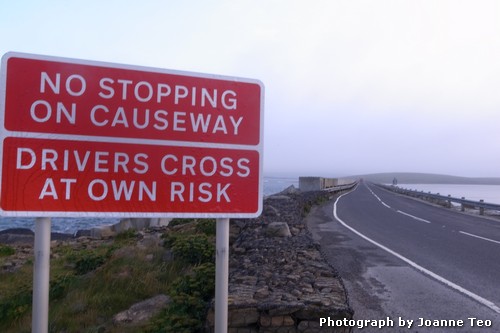
It is still subject to waves and strong winds, so the risk is yours to take.
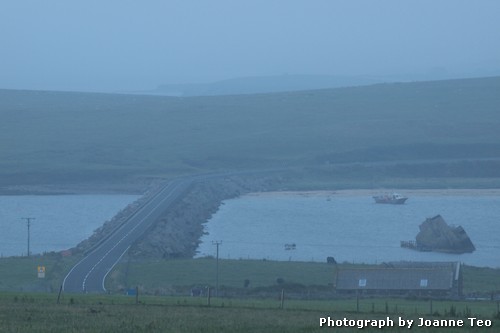
And there you can see the remnants of the Reginald. These ships were thrown there to deflect the German submarines. Today, they make excellent dive sites.
The bridges are known as the Churchill Barriers as he commissioned them to block off attacks from the Germans.
On the way, we saw the Italian Church that was built by prisoners of war in WWII.
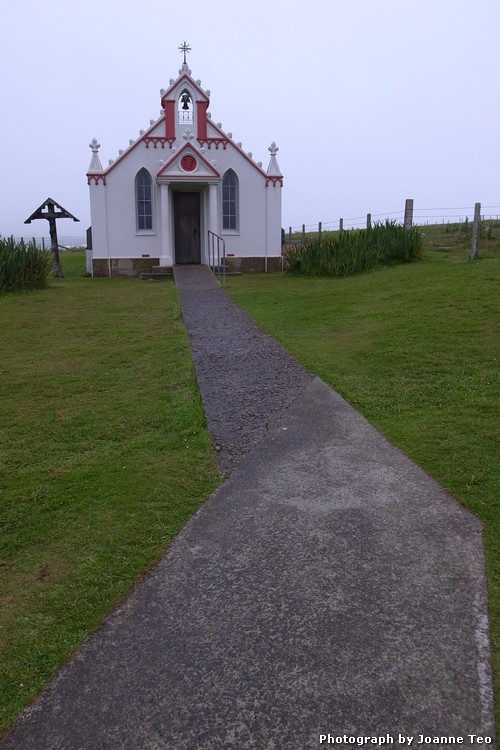
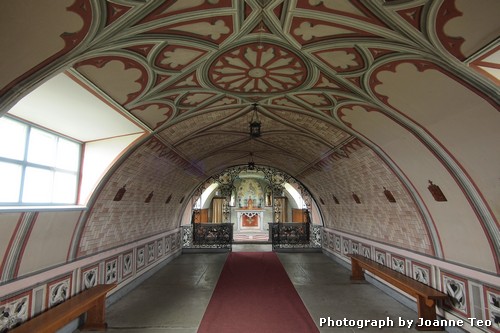
Everything looks like carvings, but they’re really all hand painted.
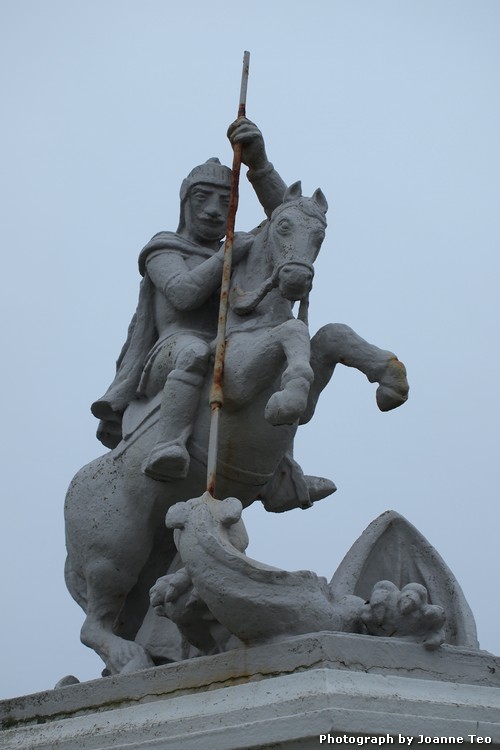
Continuing our way to Hoxa Head, we found a museum of tapestry and had tea at the cafe at the end of the road. It had a great cake of fresh cream and lime. It was such a soft and light and moist cake. We also had the sweet potato and red pepper soup. It was good. Sweet with a hint of heat. Definitely a soup I’d like to try and make. It really makes a nice warming soup.
Along the way, there was one notable difference between the Shetland Islands and Orkney. Orkney has a lot more cattle.
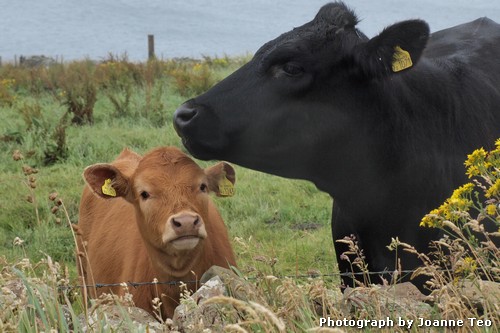
These will soon hit the table and make yummy beef.
There are much fewer Shetland Ponies. I suppose they are useless for real farm work.
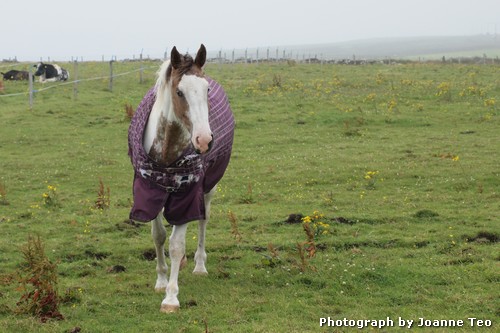
And you know, the grass is greener on the other side, especially for animals. This one couldn’t resist me feeding it.
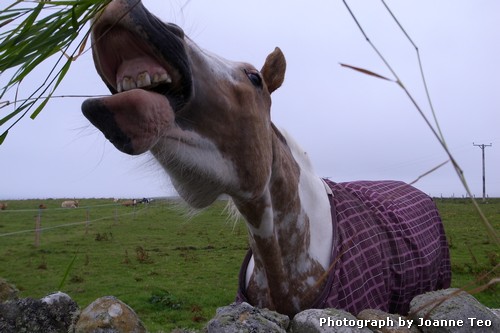
At the end of Hoxa Head, there is the Hoxa Head Battery that protects the Scapa Flow, where there used to be a naval base here until 1957. It was a fun walk through the grounds but the structures aren’t being taken care of. In fact, it is a working farm, so you have to share your path with cattle.
We continued south down South Ronaldsay and went to see the Tomb of the Eagles.
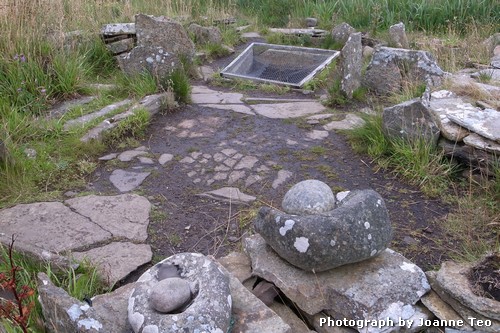
Nearby, there is an Iron Age Structure that historians postulate that is some sort of community dwelling – possibly a sauna of sorts. In the foreground, stones are heated, then thrown into the square hole that contained water that was somehow channeled in.
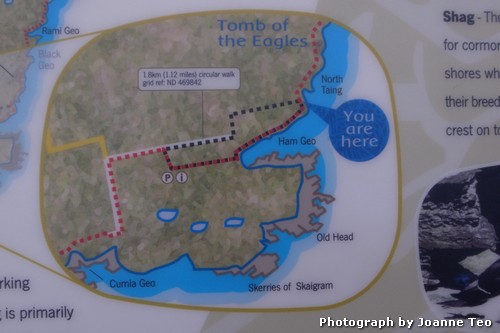
To get the the tomb, you have to walk via the scenic coastal walk. And there are plenty of these scenic coastal walks in Shetland and Orkney. And I suspect that we are going to see a whole lot more as we go on to the end of the 25-day trip.
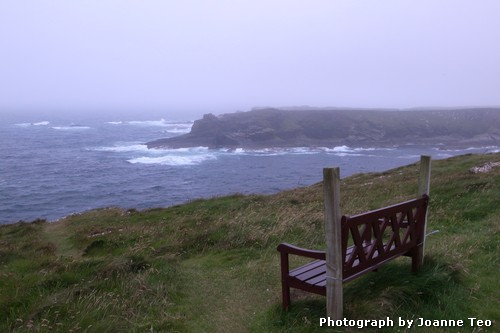
The tomb is where human remains and eagle remnants were found. There are different tribes, so to speak. Some are found with otter bones, some with dog bones etc etc. The presentation at the main entrance is the most interesting. The walk toward the tomb is scenic. The tomb itself is small and bricked. Getting in was the most exciting part.
You position yourself on a board with wheels, and rope yourself down.
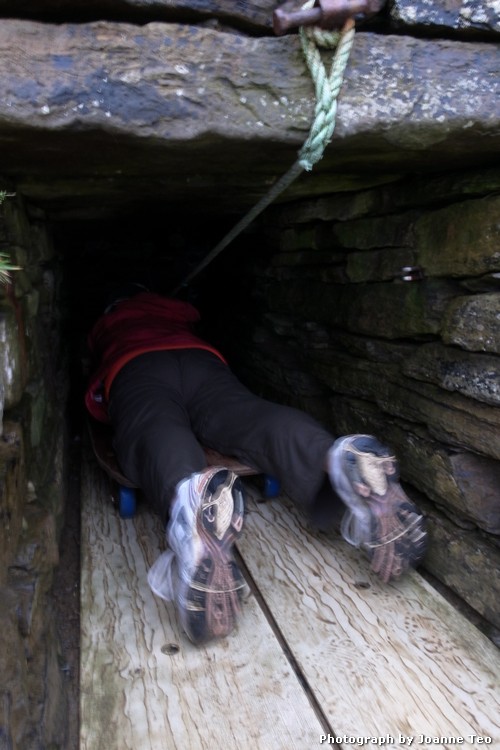
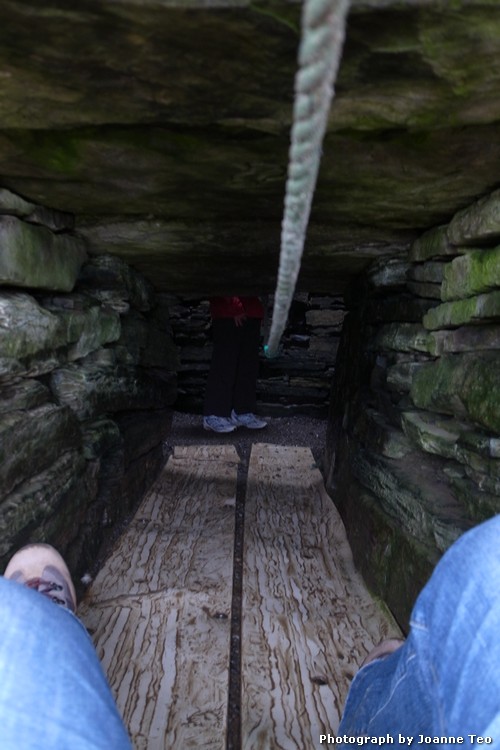
I did tell you about the wind today, right?
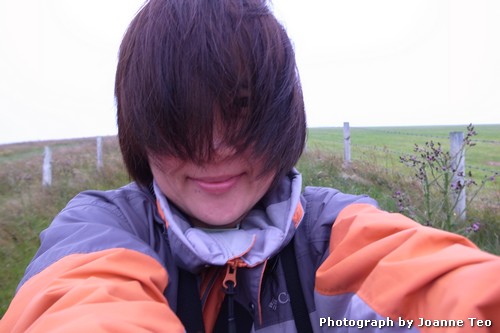
And yes, they say it is a warm day in Orkney. 14 degree C.
Nearby, there’s the Skerries Bistro. Here, we had the seafood platter.
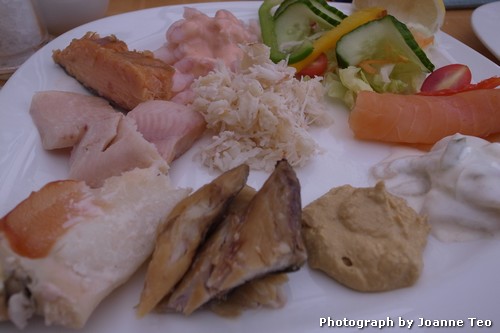
The owner of Skerries Bistro spoke to us. She was wearing a gold pendant made by her husband, who is also the skipper of the boat and a fisherman. They smoke all their fish on site and they make all the cakes. One thing I got from her is this. There is so little on this island, so everything is made from scratch with pride. There is a great sense of pride in that.
I also tried to Orkney Fudge Cheesecake. Unlike American cheesecakes, this is much lighter, but still creamy. Almost mousse like. And not like the lousy mousse cakes in Singapore filled with gelatin. This was very enjoyable and probably a tad too sweet due to the fudge.
Although I have to say, too sweet for a dessert is not a real criticism, except where it comes to balance. Like a lemon meringue pie, for example.
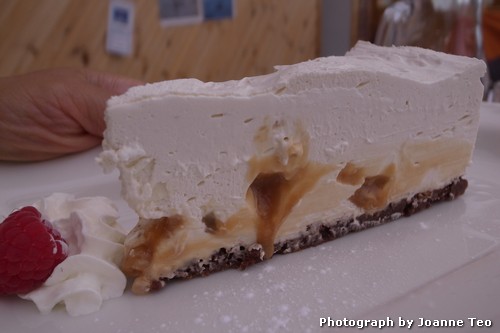
The base of this cheesecake is a flourless one and is crisp. The hazelnut and orange layer cake was also good. So we took away two other cakes – the lemon poppy seed and the carrot cake. Yet to be eaten.
Suddenly we seem to have a lot of food in our fridge.
Businesses here only open from April to October. The rest of the year? Well, maybe holidaying or something. Nice life, huh?
I continued driving toward Deerness but found nothing much. At the end of the road is a nature park. Again, loads of walks and bird watching opportunity. But it was already 7:30pm and though the sky was bright, the wind was still relentless. We headed back.
And yes, my clothes are feeling tighter already.

wah self-portrait!!!! so rare!! i almost fell off my chair.